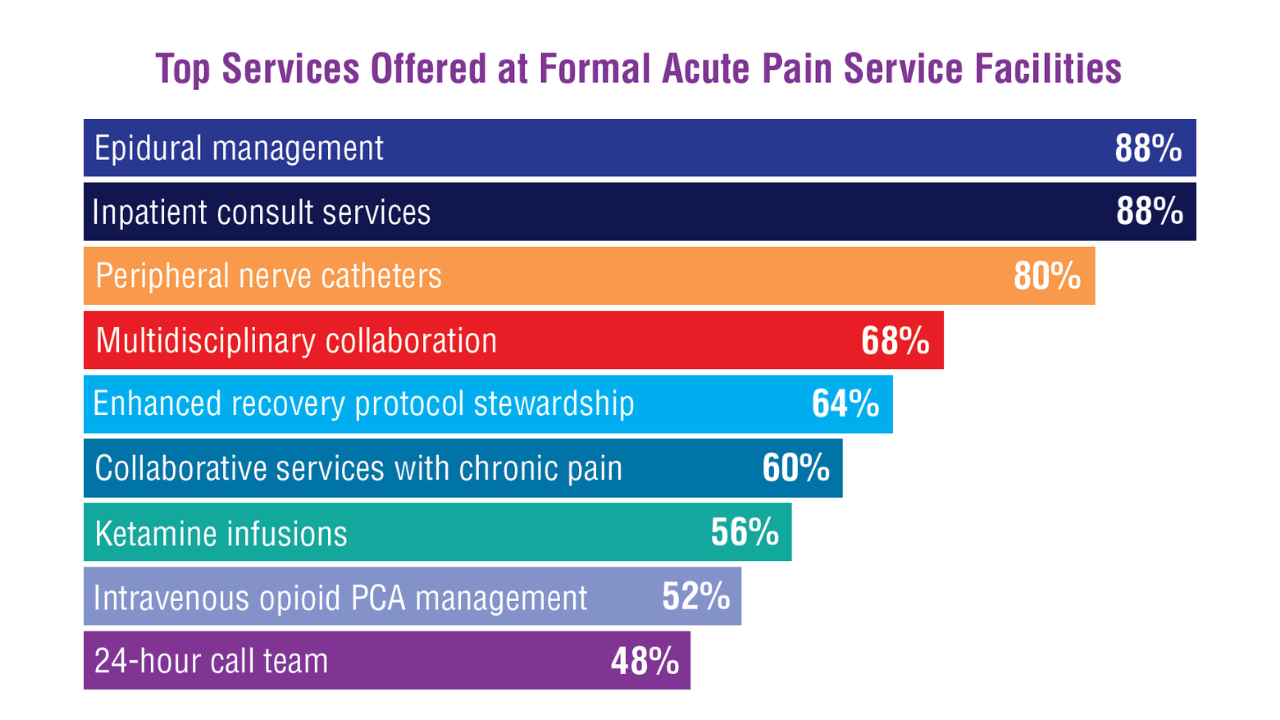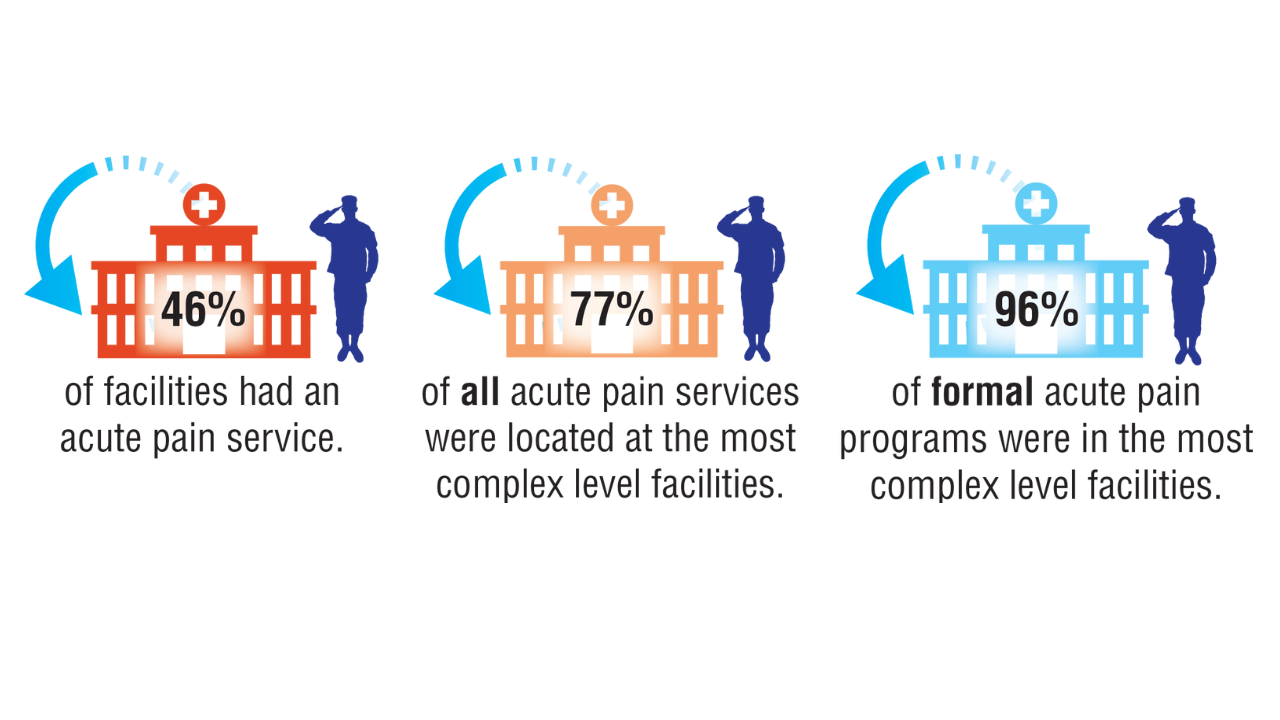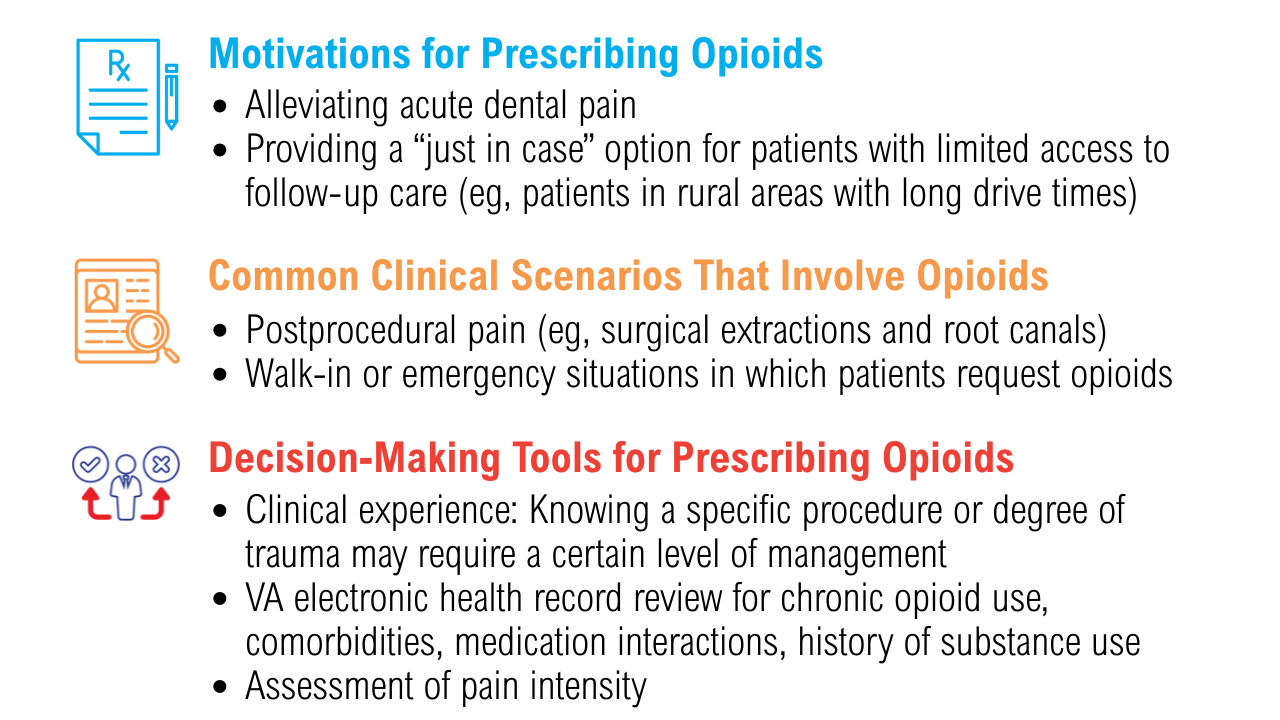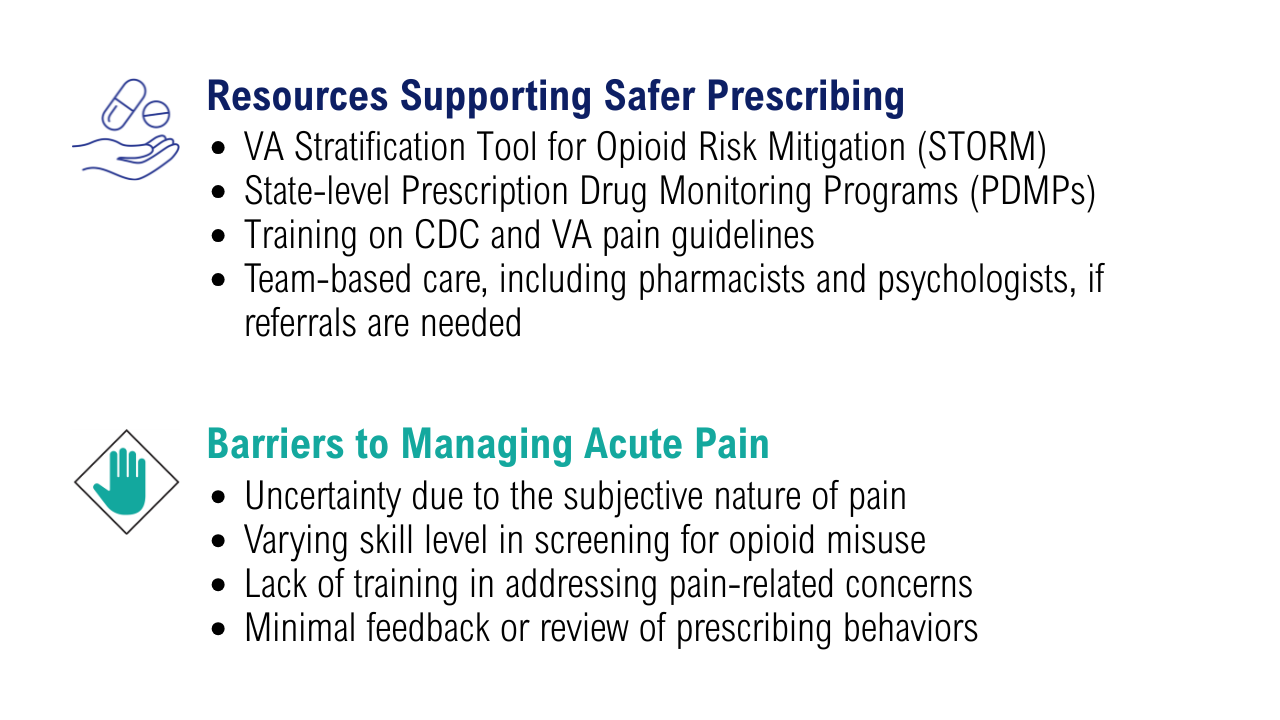Data Trends 2025: Acute Pain





Reviewed by:
Terri L. Tanielian, MA, Founder, CEO, Bluebird Road Advisors, Washington, DC
Ms. Tanielian has disclosed no relevant financial relationships.
Scott G. Pritzlaff, MD, Associate Professor, Department of Anesthesiology and Pain Medicine, University of California, Davis, Sacramento, California
Dr. Pritzlaff has disclosed the following relevant financial relationships:
Serve(d) as a director, officer, partner, employee, advisor, consultant,
or trustee for: SPR Therapeutics; Medtronic, and Bioventus;
Received royalties from Wolters Kluwer.





Veterans experience acute pain for a multitude of reasons, ranging from combat-related injuries to routine medical procedures, such as surgeries or dental extractions.1-3 Opioid use disorder is a concern within the VA and in the acute pain setting, with one study finding that 98% of veterans with combat-related injuries from 2007-2011 were prescribed opioids.1,4 Anesthesiologist-led acute pain services play a vital role in managing acute pain among veterans, reducing the incidence of opioid-related adverse effects, and facilitating more streamlined, coordinated care pathways that support timely recovery and discharge.5,6
VA dental providers have reported concerns about opioid-prescribing decisions for clinical scenarios with acute pain present in light of the opioid epidemic.3 Guidelines released in 2022 for acute perioperative pain management emphasized acute pain services and thorough preoperative evaluation to help prevent negative opioid-related situations.7
 Acute Pain Services in the VHA5
Acute Pain Services in the VHA5
VHA surgical facilities were surveyed about acute pain services. A formal acute pain service was defined as one that is separate and distinct from chronic pain and provides postoperative and inpatient pain medicine services. Acute Pain Services in the VHA5
Acute Pain Services in the VHA5
VHA facility complexity was determined by volume, risk, teaching, research, and intensive care unit capability. Acute Pain Services in the VHA5
Acute Pain Services in the VHA5
Multisociety guidelines have recommended access to a pain medicine specialist for acute perioperative pain, but most VHA facilities do not have acute pain management services, formal or informal.4,5 Higher-level complexity programs are more likely to have services, but barriers to implementation in other facilities have not yet been identified.4 Opioid Prescribing Behavior for Acute Oral Pain3
Opioid Prescribing Behavior for Acute Oral Pain3
Interviews were conducted with 90 dentists (80% general; 20% specialty) at 33 VA facilities between 2019 and 2020 to assess factors influencing opioid decision-making for acute dental pain. Interviews were structured around questions related to capability, opportunity, motivations, and prescribing behaviors to identify potential, future opioid-related interventions. Opioid Prescribing Behavior for Acute Oral Pain3
Opioid Prescribing Behavior for Acute Oral Pain3 Acute Pain Services in the VHA5
Acute Pain Services in the VHA5
VHA surgical facilities were surveyed about acute pain services. A formal acute pain service was defined as one that is separate and distinct from chronic pain and provides postoperative and inpatient pain medicine services. Acute Pain Services in the VHA5
Acute Pain Services in the VHA5
VHA facility complexity was determined by volume, risk, teaching, research, and intensive care unit capability. Acute Pain Services in the VHA5
Acute Pain Services in the VHA5
Multisociety guidelines have recommended access to a pain medicine specialist for acute perioperative pain, but most VHA facilities do not have acute pain management services, formal or informal.4,5 Higher-level complexity programs are more likely to have services, but barriers to implementation in other facilities have not yet been identified.4 Opioid Prescribing Behavior for Acute Oral Pain3
Opioid Prescribing Behavior for Acute Oral Pain3
Interviews were conducted with 90 dentists (80% general; 20% specialty) at 33 VA facilities between 2019 and 2020 to assess factors influencing opioid decision-making for acute dental pain. Interviews were structured around questions related to capability, opportunity, motivations, and prescribing behaviors to identify potential, future opioid-related interventions. Opioid Prescribing Behavior for Acute Oral Pain3
Opioid Prescribing Behavior for Acute Oral Pain3 Acute Pain Services in the VHA5
Acute Pain Services in the VHA5
VHA surgical facilities were surveyed about acute pain services. A formal acute pain service was defined as one that is separate and distinct from chronic pain and provides postoperative and inpatient pain medicine services. Acute Pain Services in the VHA5
Acute Pain Services in the VHA5
VHA facility complexity was determined by volume, risk, teaching, research, and intensive care unit capability. Acute Pain Services in the VHA5
Acute Pain Services in the VHA5
Multisociety guidelines have recommended access to a pain medicine specialist for acute perioperative pain, but most VHA facilities do not have acute pain management services, formal or informal.4,5 Higher-level complexity programs are more likely to have services, but barriers to implementation in other facilities have not yet been identified.4 Opioid Prescribing Behavior for Acute Oral Pain3
Opioid Prescribing Behavior for Acute Oral Pain3
Interviews were conducted with 90 dentists (80% general; 20% specialty) at 33 VA facilities between 2019 and 2020 to assess factors influencing opioid decision-making for acute dental pain. Interviews were structured around questions related to capability, opportunity, motivations, and prescribing behaviors to identify potential, future opioid-related interventions. Opioid Prescribing Behavior for Acute Oral Pain3
Opioid Prescribing Behavior for Acute Oral Pain3
Click to view more from Federal Health Care Data Trends 2025.
,false